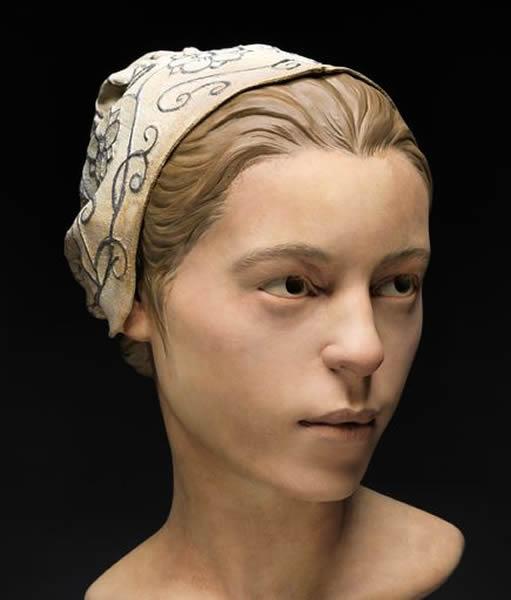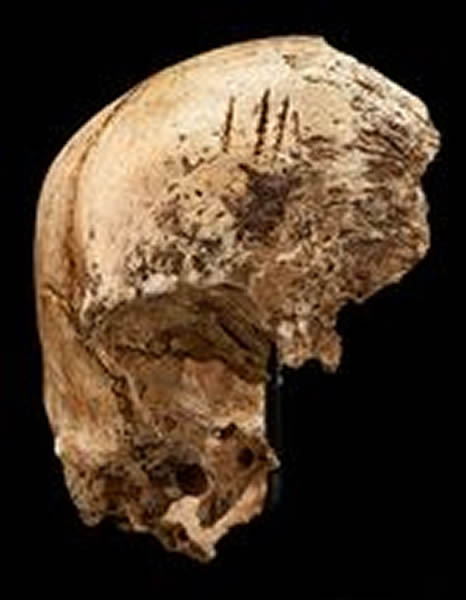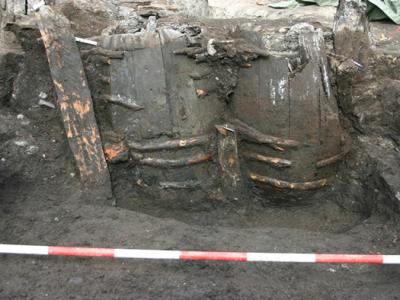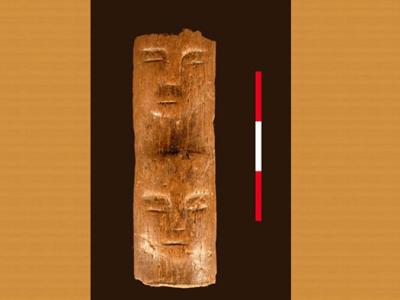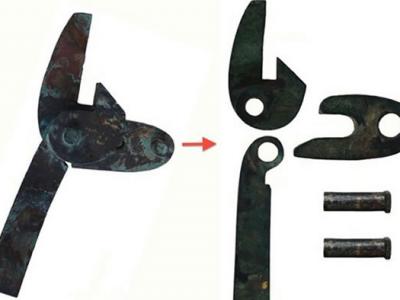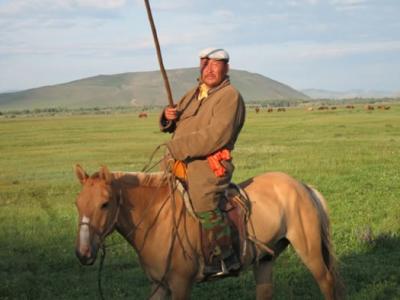Jamestown Colonists Resorted to Cannibalism
Archaeologists have discovered the first physical evidence of cannibalism by desperate English colonists driven by hunger during the Starving Time of 1609-1610 at Jamestown, Virginia (map)—the first permanent English settlement in the New World.
The announcement was made by a team of researchers from the Smithsonian Museum of Natural History, Historic Jamestowne, and the Colonial Williamsburg Foundation at a press conference today in Washington, D.C.
There are five historical accounts written by or about Jamestown colonists that reference cannibalism, but this is the first time it’s been proven, said William Kelso, director of archeology at Historic Jamestowne.
“This is a very rare find,” said James Horn, vice president of research for the Colonial Williamsburg Foundation. “It is the only artifactual evidence of cannibalism by Europeans at any European colony—Spanish, French, English, or Dutch—throughout the colonial period from about 1500 to 1800.”
Portions of the butchered skull and shinbone of a 14-year-old girl from England, dubbed “Jane” by researchers, were unearthed by Jamestown archaeologists last year. They found the remains about 2.5 feet (0.8 meters) down in a 17th century trash deposit in the cellar of a building built in 1608 inside the James Fort site.
Kelso then asked Doug Owsley, head physical anthropology at the Smithsonian’s National Museum of Natural History, to examine the remains and determine if she was killed or cannibalized.
The findings answer a longstanding question among historians about the occurrence of cannibalism at the settlement during the winter of 1609, when about 80 percent of the colonists died.
A forensic facial reconstruction of the 14-year-old victim of cannibalism at Jamestown during the winter of 1609.
Shallow chops, top, on the victim's skull.
Hesitation
Owsley described multiple chop and cut marks on the girl’s skull that were made by one or more assailants after she died. “They were clearly interested in cheek meat, muscles of the face, tongue and brain,” he said. Jane’s hair was not removed.
Four closely spaced chop marks in her forehead indicated a failed attempt to split her skull open, Owsley said. The close proximity of the unsuccessful blows indicates that she was already dead, or they would have been more haphazard, he explained.
The back of her skull was then cracked open by a series of chops by a light weight axe or cleaver, he said.
Cleaver blades and knives excavated from the Jamestown site were compared to the blows, and Owsley said he thinks a cleaver was used.
There were also numerous cuts, saw marks, and gouges along her lower jaw made by the tip of a knife to get to the meat, and to remove throat tissue and the tongue, he said.
Owsley said the cutting was not done by an experienced butcher, except possibly the chops to the shinbone. “There is a hesitancy, trial, and tentativeness in the marks that is not seen in animal butchery,” he said.
“The desperation and overwhelming circumstances faced by the James Fort colonists during the winter of 1609-1610 are reflected in the postmortem treatment of this girl’s body,” Owsley added.
Although only part of the skull is still intact, researchers were able to produce a facial reconstruction of Jane by digitally creating a 3D skull.
Historic Jamestowne’s Kelso said that settling Jamestown was “a very dark undertaking.” This evidence of cannibalism “almost puts you in the time,” he added.
Backstory
Since only ten percent of Jane’s skeleton has been recovered, researchers have not been able to tell much about her story, but they do know by examining her shinbone that she was 14 years old.
Based on isotope studies of her third molar, the high nitrogen content meant Jane may have been from a high-status family or served as their maid.
Elevated nitrogen levels indicate that she ate a lot of protein, which was scarce and expensive, said Kari Bruwlheide, a physical anthropologist at the Smithsonian who works with Owsley.
Researchers also know that she was probably from the southern coast of England, based on a comparison of oxygen isotopes in her tooth and oxygen isotopes found in groundwater samples from the area. This helps to pinpoint where she lived while her permanent teeth formed during infancy.
Based on the carbon isotopes in her bones, which indicate her potential diet, Jane had not been in Jamestown for long before her death, Bruwelheide said.
A Desperate Situation
According to Horn, of the Colonial Williamsburg Foundation, Jane probably arrived at Jamestown in August of 1609 on one of six ships from England that straggled into the fort after surviving a hurricane during their crossing.
The new arrivals’ food stores were spoiled or depleted—most of their provisions were lost when the flagship Sea Venture sank during the storm—and many of them were in poor health, he said.
The Jamestown colonists were already starving when the 300 new settlers arrived, having suffered from diseases and food shortages.
Increasing demands for food from nearby Indian tribes, coupled with severe drought conditions, caused relationships with the Powhatan Indians—a powerful chiefdom that extended across much of Virginia’s coastal region—to deteriorate.
The colony’s leader, Captain John Smith, who had been wounded in an explosion, left with the fleet on its return trip to England, leaving Jamestown rudderless.
By November, the Powhatans launched a war against the English, laying siege to Jamestown and cutting the colonists off from outside help. “Conditions became increasingly desperate,” Horn said.
At first the settlers ate their horses, then their dogs and cats. Jamestown residents also ate rats, mice, and snakes, according to a first hand account by George Percy, who became the colony’s temporary leader after John Smith left.
Percy writes that some colonists ate their boots, shoes, and any other leather they could find. Others left the fort to search for roots in the woods, but were killed by Powhatan warriors.
“Nothing Was Spared”
As the siege continued into the winter, Percy commented that “nothing was spared to maintain life and to do those things which seem incredible.”
He was referring to cannibalism, Horn said. “Only in the most desperate of circumstances would the English have turned to cannibalism.”
By spring of 1610, only about 60 people living at the fort had survived, according to Kelso’s calculations. How many of the dead were cannibalized is unknown, but Jane was not an isolated case, according to historical accounts.
The colony was saved by the arrival of Lord de la Warr, Jamestown’s first governor, who brought a year’s worth of supplies and more settlers. Jamestown would go on to become the first permanent English settlement in the New World.
A public exhibition about the discovery and investigation of Jane’s remains, her facial reconstruction, the evidence of cannibalism, and the circumstances that led to the Starving Time will open at the Archaearium at Historic Jamestowne, on Jamestown Island, on May 3.(Paula Neely,National Geographic News,Published May 1, 2013)
